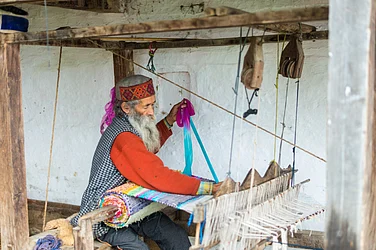In 1922, Sir Edwin Lutyens, the architect and designer of New Delhi, visited Shimla and stayed at Hotel Carlton, now called Oberoi Clarke’s. Standing outside his hotel, he looked at the thickly-populated southern slope of the lower bazaar and said, “I am sure this was done by monkeys. Shoot them if they do that again.”
As an architect, Lutyens did not like the idea of construction on the steep angled slope. From the point of view of construction, he clearly indicated the dark future of Shimla. Today, after a hundred years of his visit, we realise what he said. On the other hand, Lutyens was highly satisfied with the half-timber style of architecture adopted for erecting buildings at that time — what today we call Dhajji walls.
Have you ever seen any building of the British era collapsing as today’s edifies? Or have you ever seen any structures in the hills such as temples and palaces built in hill architecture collapsing like the modern ones? No. Because the half-timber style used in them is appropriate for buildings in hilly areas. Walls made of wooden frames with hollows filled with stone are the right way to erect structures in the hills. They hold each-other properly and prevent the building from collapsing. These houses may tilt a bit but never collapse.
Secondly, in the hilly regions, the building requires a strong foundation. In the plains when you construct a small house, the foundation is not more than five feet deep. But this formula does not work in the hills. Here either the foundation has to be deep or the building must be erected on solid ground. Sloppy hills are dangerous for building and the fundamental reason is the sedimentary rocks of the Himalayas.
In 1856 when Shimla was connected by roads to the plains, the people of the Sood community travelled to Shimla to set up their businesses in the lower bazaar area. A number of houses and shops were constructed at that time and all the debris that came out in the process of leveling the ground for the buildings was thrown below the cart road. In those days, the only construction on that land was a cemetery —below the Bullock Cart Station, now the Old Bus Station— and the rest of the land was covered with forest.
In 1962, during the China War, a number of people from higher regions, especially from Ladakh, came down and started making their hutments on the land of the cemetery and the other land below the road. Also, after 1971 when Himachal Pradesh was granted complete statehood, a number of people came from Punjab and started building their hutments on the land below the cart road on the ground covered by debris thrown in 1856. With time, the hutments became permanent and high-rising buildings. Because of the weak foundation, the recent rains became the reason for their collapse.
The authorities do not have to make any new regulations. Instead, they must follow the rules made during the British era. The new style of construction —pillars, beams, and slabs— does not work on the silty land of the Himalayas.





















